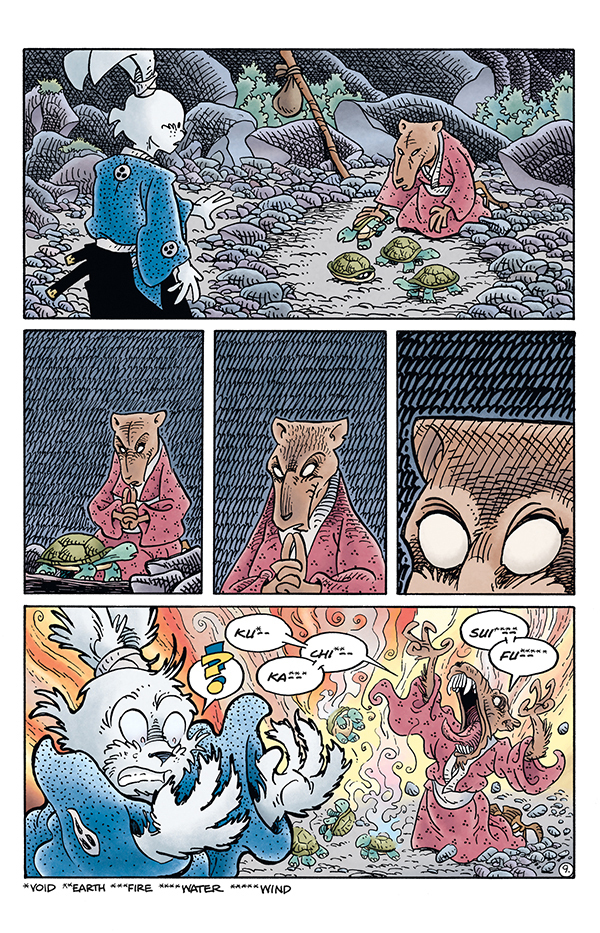

The first issue also included an original Usagi Yojimbo short story. A fourth publisher, Radio Comix, has published two issues of The Art of Usagi Yojimbo which contained a selection of unpublished drawings, convention sketches, and other miscellaneous Usagi Yojimbo artwork. The third is Dark Horse Comics, at which Usagi Yojimbo is still being published (as volume three, over 100 issues), and who also released a fourth Color Special. The second was Mirage Comics (volume two 16 issues).
Usagi yojimbo complete collection plus#
The first publisher was Fantagraphics (volume one 38 regular issues, plus one Summer Special and three Color Specials).
Usagi yojimbo complete collection series#
The Usagi Yojimbo series has been published by three different companies. Usagi first appeared in the anthology Albedo Anthropomorphics in 1983, and later in the Fantagraphics Books anthropomorphic anthology Critters, before appearing in his own series in 1987. Sakai quickly expanded on the idea and his story world quickly took on an anthropomorphized cartoonish nature which created a fantasy setting he decided suited his dramatic needs well with a unique look he thought could attract readers. Usagi was first conceived as a supporting character in The Adventures of Nilson Groundthumper and Hermy, a brief series that predates Usagi Yojimbo. However when Sakai was idly doodling, he drew rabbit ears tied in a topknot on his proposed hero and was inspired by the distinctive image it gave him. Originally, Usagi and other characters in the series were going to be human in stories explicitly modeled after the life of Miyamoto Musashi. Usagi was named the thirty-first greatest comic book character by Empire Magazine.

Those efforts have been successful enough for the series to be awarded a Parents' Choice Award in 1990 for its educational value through Stan's "skillful weaving of facts and legends into his work." The series also follows the standard traditional Japanese naming convention for all featured characters: their family names followed by their given names. There are often stories whose purpose is to illustrate various elements of Japanese arts and crafts, such as the fashioning of kites, swords, and pottery. The architecture, clothes, weapons, and other objects are drawn with a faithfulness to the period's style. The stories include many references to Japanese history and Japanese folklore, and sometimes include mythical creatures. The books consist of short stories, and occasionally novel-length stories, with underlying larger plot-lines which culminate in long extended story lines. The series is also influenced somewhat by Groo the Wanderer by Sergio Aragonés (Sakai is the letterer for that series), but the overall tone of Usagi Yojimbo is typically less comedic. Usagi Yojimbo is heavily influenced by Japanese cinema and has included references to the work of Akira Kurosawa (the title of the series is derived from Kurosawa's 1960 film Yojimbo) and to icons of popular Japanese cinema such as Lone Wolf and Cub, Zatoichi, and Godzilla. Usagi wanders the land on a musha shugyo (warrior's pilgrimage) occasionally selling his services as a bodyguard. Set primarily at the beginning of Edo period of Japan (early 17th century), with anthropomorphic animals replacing humans, it features a rabbit ronin, Miyamoto Usagi, who is partially based on the famous swordsman Miyamoto Musashi.


 0 kommentar(er)
0 kommentar(er)
